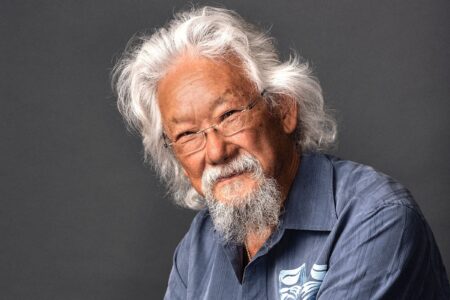K-12 OPTIONS: The Fine Arts Model
Editor’s note: As a part of Rossland’s efforts to envision a future for its schools, the Telegraph will occasionally be publishing articles of general public interest as our community works to come up with viable options before the school district’s March, 2009 deadline for community input. This first instalment in this series is an interview with Langley Fine Arts School Principal Balan Moorthy, conducted by Visions for Small Schools’ Janis Anderson in March, 2008 when Anderson attended LFAS’s annual open house. It represents one possibility for Rossland’s future. If you have other ideas, feel free to submit an article or post links or documents to our K-12 forum (link below).
ANDERSON: How do you go about starting a fine arts school?
MOORTHY: I can tell you about what happened in the Abbotsford district when they looked at the viability of a fine arts school. It came about through the passion of just a couple of parents. They were looking at the viability of a fine arts school in the Abbotsford school district. It started with them connecting with other parents. It went from there towards focussing on trying to initiate a fine arts school and they received signatures from the community. They received hundreds and hundreds of signatures expressing an interest. From there the school developed as a dual track school within a school and then the program grew so quickly that it became a stand-alone program and now it’s in two sites.
The way these schools usually come about is because of the passion of the parents and their willingness to look at schools that are sometimes at risk. This school (formerly Fort Langley Junior Secondary) used to be in a very small community where the population of the school was dwindling quite significantly. They opened a new school, Walnut Grove Secondary, up the road, with about 2000 students and there was a fear that this school was about to close. So they gradually added a fine arts elementary grade at a time. Now it’s a stand-alone fine arts school with a wait list of approximately 850 students from across the province. Believe it or not, we’ve even had students from Nelson come down and stay with people. It’s the only school of its type. We don’t have much competition yet as far as the secondary model is concerned. The passion for choice schools comes from parents. They also have the choice to educate their kids in the public system or privately.
ANDERSON: It is a very exciting idea, that this started from passion of a couple of parents.
MOORTHY: What I would say to anyone if there ever was a passion to look at that structure is I don’t know of a fine arts school in North America that hasn’t been successful, that hasn’t got a waiting list. You’d have to work really hard at messing it up. When you already have a structure in place in the arts that’s as powerful as [Rossland] seems to have, then I say ‘go for it’. It’s up to parents.
ANDERSON: I just keep thinking ‘we’re already half way there’.
MOORTHY: The other unique thing about choice schools or fine arts schools is–and I assume your district is getting smaller?
ANDERSON: Yes.
MOORTHY: They do attract kids from surrounding districts. It does create a kind of competitive market and there has to be a willingness to go there. It sounds like you’ve got all kinds of academies and you’re trying all kinds of unique things.
ANDERSON: We have good working relationships with the administration, the teachers, and the parents. We have also been powerful in our academics. Why? Because we’ve been so strong in the arts. It just goes hand-in-hand.
MOORTHY: They took the formula of my original elementary school, North Poplar Fine Arts School, and since then I’ve converted our elementary model to fit it. But what would be interesting to see would be if there was a passion in your district to look at K-12 as a fine arts focus. It sounds like you’ve got passionate, articulate parents. They need to understand the intellectual, scientific connection as to why a fine arts school is good for their children and what the statistics are and why you want your kids to learn in that sort of environment.
ANDERSON: How did you communicate that to people in Abbotsford?
MOORTHY: In Abbotsford, again, because they’re politically-minded, it just became the mobilization of parents. There was some resistance there, but when you have the support of three or four hundred parents? It’s a door-to-door campaign.
ANDERSON: It’s a critical mass issue.
MOORTHY: Fort Langley was a dying little farm town. Now the housing market here is incredible. Part of the reason is because of the school. People want proximity to the fine arts school and now [Fort Langley] is a little fine arts community, so adding a fine arts school in a resort town will add to the lustre of that town. Eventually, the community will have a resort/arsty town focus.
ANDERSON: Rossland is kind of like Fort Langley. I drove through here and thought, ‘this is like Rossland’.
MOORTHY: The city and the community have to be forward-thinking enough to say, ‘why not a fine arts school?’ in order to increase the civic attraction of the whole community, as well as the cultural attraction. We’re not an elitist school. Take a lot of kids in here who are struggling in other programs-kids with social, emotional, and intellectual issues who have never fit into any school they’ve ever been in. We’ve taken a couple of kids from our highest risk alternative school and they’ve had more connection at this school than at any other school they’ve ever been in, whether it’s issues of drugs or alcohol or just issues of social disconnection. Kids who struggle academically have done well here, though, obviously we also get kids who are passionate about academics.
ANDERSON: Thank you so much.
MOORTHY: You’re welcome.
Postscript: This is an example of what a community can do when motivated. We may not want this model exactly but could use it as an example. Have a look at the Langley Fine Arts School website. I am interested in this model because of its unique timetable which allows arts and academics to overlap. This school is a K-12 and is very strong in the academics. We might investigate how our academies could fit into this model. Mr. Moorthy has offered to come to Rossland and give a presentation about his school should there be sufficient interest.—Janis Anderson.
Resources:
Langley Fine Arts School Website: http://www2.sd35.bc.ca/lfa/
Rossland Telegraph K-12 Forum: http://www.rosslandtelegraph.com/node/1212
VSS group on bhubble.com: http://www.bhubble.com/home?clear=all&g=5109























